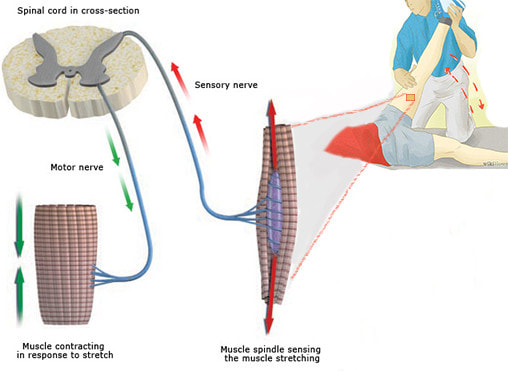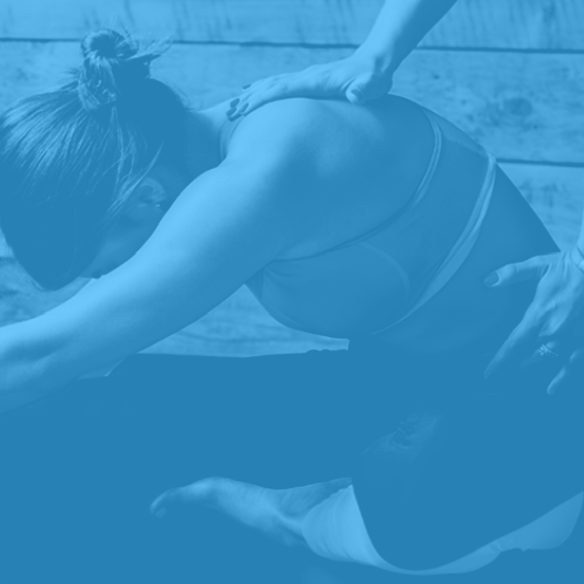What is the PNF technique and why is it the most effective way to improve your flexibility?28/4/2022 PNF stretching is an advanced form of flexibility training that involves contracting and stretching muscles. The technique was originally developed in the clinical rehabilitative environment, and then moved into professional athlete and mainstream training because it is so effective. In addition to stretching, PNF also improves muscular strength, helps prevent knots and realigns muscle fibers and connective tissue.
In PNF, the therapist stretches the muscle to its comfortable end range and then the client resists (or pushes out of the stretch), for approximately 5 to 10 seconds, then relaxes as the therapist stretches the muscle a bit further, repeating 3-5 times and then holding ideally for 30 seconds or more. PNF stretching works by fooling the nervous system into relaxing the myotactic, (or stretch) reflex, which is the unconscious contraction that happens when we go into a stretch. The stretch reflex is a protective mechanism, designed to prevent straining and tearing muscles and tendons by exciting the muscle spindle to contract the muscle and protect it from being stretched beyond a normal range of motion. The muscle spindles are located within the belly of the muscle, between and parallel to the main muscle fibers, and are made up of spiral threads called intrafusal fibers, and nerve endings, encased within a connective tissue sheath. These spindles monitor the speed at which a muscle is lengthened and if stretched too far or too quickly, activate the stretch reflex. So whilst you think you are at your limit, by resisting, you tell the stretch reflex, "Hey, don’t panic, man! The muscle is already contracting, no sense in overdoing it", the muscle stops resisting and you magically go further. It is truly amazing!
0 Comments
Our ever growing understanding of anatomy highlights the importance of connective tissue that gives our bodies’ structure and provides an environment for us to operate in an integrated manner.
Often we are immobilised in some way and through stretching the muscles, joint capsules and fascia network using the PNF technique of contacting, resisting and relaxing, the tendency to hold back and over protect is released, we open and expand the body and breakdown excess tissue creating real change in your movement and level of discomfort.
That's why it's great to include assisted stretching in your flexibility training! re to edit. |
MargieI'm Margie, the owner of A Good Stretch. I love helping you feel good! Archives
April 2024
Categories |
Photo from shixart1985



 RSS Feed
RSS Feed
